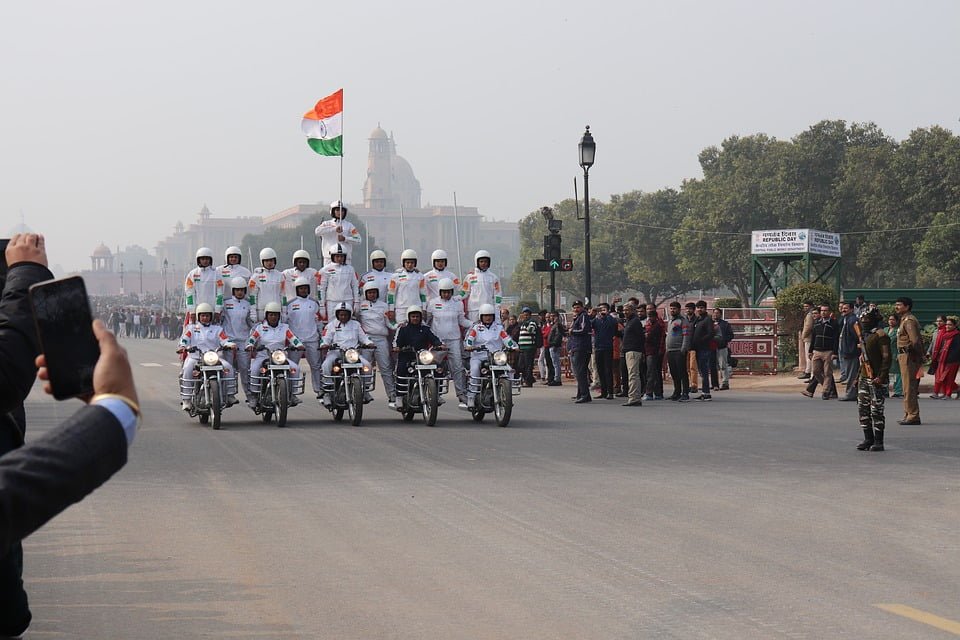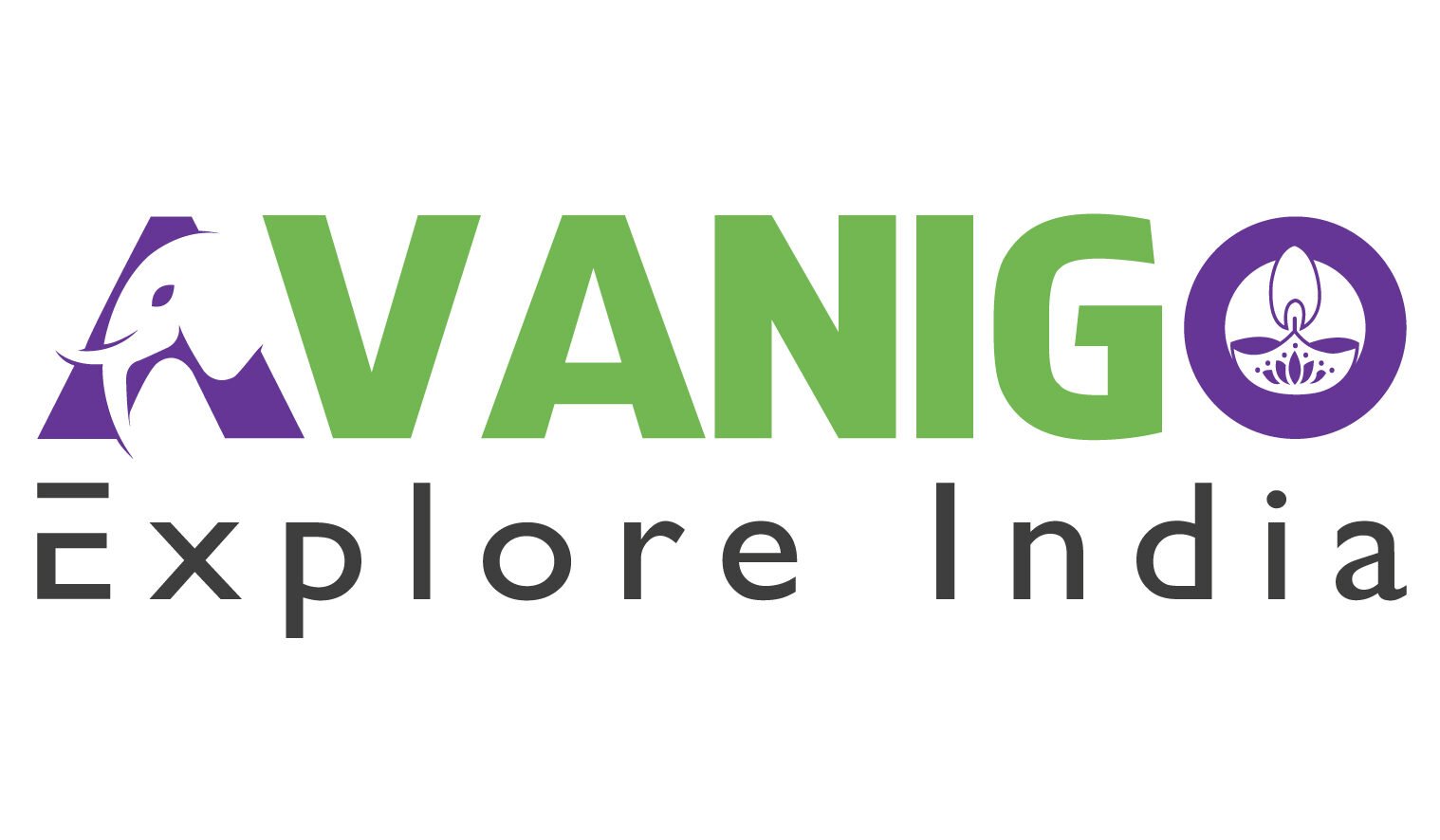The Republic Day of India is a significant day for Indians. It reminds us why India is called a Republic and the meaning of a republic nation. As the tricolor flag unfurls on this day in the Parade grounds in the country’s capital New Delhi, the heart of every Indian fills with pride and joy.
In this post, let us understand why we celebrate 26th January as Republic Day every year. We will also move ahead to look at the Republic Day Essay, fascinating facts about the republic day of India and why India is called a Republic.
Why do we celebrate Republic Day?
Republic Day is celebrated on 26th January every year in India. The Republic Day celebration reminds us that the head of India – the President – is elected by the people and not hereditary.
It was on 26th January 1950 that the Indian Constitution came into implementation. From this day, India became the Sovereign Democratic Republic with a parliamentary system of government. Read about India’s New Parliament Building

What is the meaning of Republic?
- A nation is said to be a republic if its head is elected by the representatives who are chosen by the citizens.
- A republic nation is not ruled by Kings who can be hereditary; neither follows any monarch rule.
- In a republic nation, the Constitution holds the utmost significance. No one is privileged with any sort of deviation from the constitutional rules.
Suggested Reading: Significance of Elephants in Indian Culture
What is the meaning of Democracy?
India is a democratic nation.
In a democracy, people hold the power to choose the leader of their choice. These leaders, who are chosen by the people, make laws and implement them for the betterment of the nation.
What is the difference between Democracy and Republic?
Though both look similar, the main difference between Democracy and Republic is:
- Democracy means people hold the ultimate power to choose their leaders.
- Republic means the country is run by the leader, who is chosen by the people.
- In a democracy, there are no rules on government. While in the Republic, the government has some constraints as dictated by the Constitution.
What is the meaning of a Sovereign country?
In a Sovereign country, the power rests with the people. A body chosen by people, like Congress or Parliament, makes the rules and runs the country. In India, people choose Parliament and it holds the supreme power in lawmaking.
What is the meaning of a Socialist Secular nation?
India is also a Socialist and Secular nation. These two terms were later added with the 42nd Constitution Amendment 1976.
Meaning of Socialist country
In a socialist country, the government owns or runs the means of production like farms, factories, and raw materials. It abides by the rules of the constitution in distributing the fruits of the economy equally to all its people. Battle of Chandawar Essay Facts about India for kids
Meaning of Secular Country
In a secular country, people have the freedom to live according to and practice the religion of their choice. India is a secular nation and is home to nine religions living harmoniously and enriching Indian culture. Indian Constitution does not permit the interference of the state’s power in the religious choice of its citizens. In other words, a government in a secular country is neutral towards all religions.

Why do we need a constitution?
The reason why we celebrate Republic day on January 26th is – it is from this day that the Indian Constitution came into existence.
But why does a country need a constitution?
What is the significance of the Constitution to a country?
Interesting facts about the Indian Tricolor flag
Importance of the Constitution in democracy:
- A constitution is the rule guide for a country’s rule.
- It contains all the rules to which its people and government should adhere.
- The Constitution provides the citizens with rights, duties, and responsibilities.
- It empowers citizens irrespective of religion, gender, social and economic status.
- It holds restrictions on the state in a way that it works for the betterment of the citizens.

Facts about Indian Constitution
- Indian Constitution provides a unitary form of Parliament that works federally.
- Unitary means the entire states in the nation are reporting to the President.
- Federal means the states hold the distributed powers and their heads work for the implementation of the allotted tasks.
- The Unitary Parliament comprises the President and the two houses – Lok Sabha and Rajya Sabha.
- A Council of Ministers headed by a Prime Minister advises the President.
- In other words, the real executive power for a country run by its Constitution lies with the Prime Minister.
- Indian Constitution is the longest in the world with 444 articles classified into 22 parts and 12 schedules. It took around 2 years 11 months and 18 days to draft the Indian constitution. A Drafting Committee headed by B.R Ambedkar successfully performed this strenuous task.
- Indian Constitution is inspired by many countries such as Australia, Canada, Ireland, Japan, the USA, Germany, UK, France, and Russia. Various aspects of the Indian Constitution are taken from all these countries. For instance, the preamble of the Indian Constitution is inspired by the Constitution of the USA.
- Surprising facts about the Indian Constitution doesn’t end here. Do you know that Indian Constitution is handwritten? Yes, Indian Constitution is written in both English and Hindi. This is also one of the surprising facts about India.
- Two days before the adoption of the Constitution, i.e., on 24th January 1950, the 308 members present in the Assembly signed the handwritten Constitution. The original copy of the Indian Constitution is preserved at the Parliament Library.

Republic Day Essay
We celebrate republic day as a mark of the start of constitutional rule in India. It was on 26h January, 1950 that Indian constitution came into implementation. Thus, from that day onwards, every year we celebrate republic day as a mark of constitutional rule. As a part of Republic Day celebrations, the President of India unfolds the Indian flag at the RajPath in Delhi. The President addresses the nation and gives a message to the citizens.
Read more: Karnataka Culture and Dances You Should Know
Later, a parade takes place which is attended by thousands of people along with foreign chief guests. Vehicles carrying models of various states of Incredible India are the main attraction of Republic Day celebrations. The Republic Day celebrations of India are a lively event. The Pandemic impacted the celebrations and the world is enthusiastically waiting to see them coming up with Republic Day celebrations in the post-pandemic era.
Not only in the Raj Path, everywhere in India, including republic day celebrations at schools, offices, streets, communities, and elsewhere, the celebrations make the day an inspiring one.

Facts about Republic Day of India
- On republic day, the President of India addresses the nation in his speech. While in the Independence Day celebration, it is the Prime Minister who does the same.
- An interesting fact about Republic Day is its parade. As soon as the President unfurls the tricolor flag, the parade starts with a 21-gun salute. Naval and Military soldiers participate in this gun salute that is a tribute to the soldiers who fought for the nation’s freedom.
- The reason behind why we celebrate Republic Day on 26th January is – it was on 26th January 1930, that Poorna Swaraj Day was observed in India. Thus, the same date was chosen to mark the beginning of the Indian Republic era.
- Though we know the date of Republic Day of India is 26th January, it is actually a three-day event. The celebrations end on Republic Day. Read Panchayat Raj System in India

- It is a custom to invite foreign leaders as Chief Guests for Republic day celebrations. The chief guest for the first republic day celebrations was President Sukarno, the then and the first head of the State of Indonesia.
- The republic day celebrations and parade happen at RajPath, New Delhi. But from 1950 until 1954, they occurred at Irwin Stadium (now called National Stadium), Red Fort, Ramlila Grounds, and Kingsway.
- Dr. Rajendra Prasad took his oath as the First President of India on January 26th, 1950.
- The main attraction at the Republic Day celebrations of India is their tableaus. Arriving from various states, the tableaus depict the kaleidoscopic cultural, social, and lifestyle aspects of people of various states of India.
- The flypast done by the Airforce is another spectacle at the Republic Day celebrations of India. They comprise around 41 aircrafts making tricolor in the blue skies that is a not-to-miss sight.
Happy Republic Day to you. Jai Hind!!

